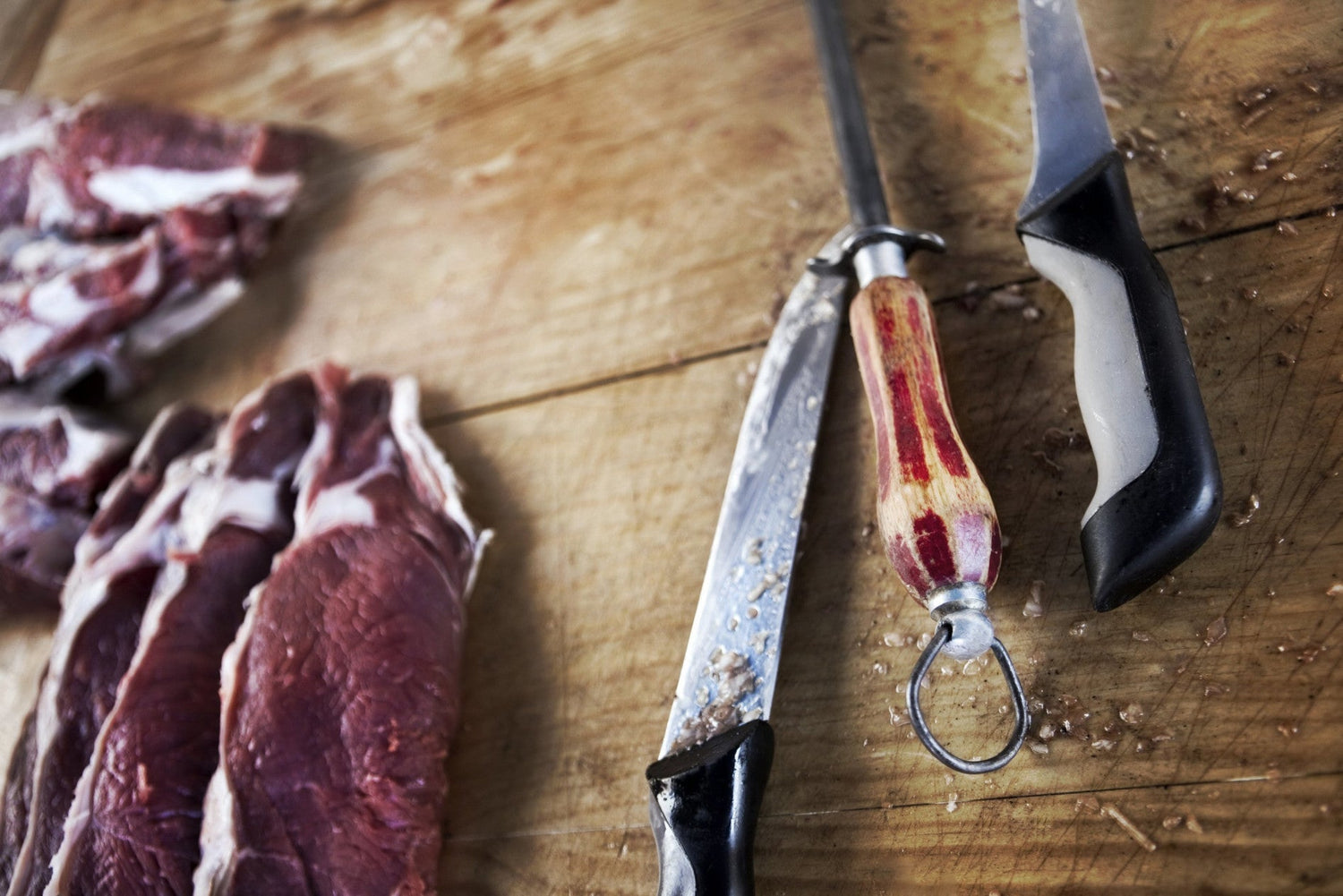Theoretically, knife sharpening is pretty simple: Run the knife down the stone at the same angle three times on each side. But in reality, it is a whole lot harder than it sounds. In addition to personal use in fishing, hunting, and general outdoors, I have worked with knives in some professional capacity for over 40 years. As a consultant, I worked for three of the top four beef plants in America training literally thousands of folks on the processing line on how to keep their tools in top shape. I’ve been on pro-staff with Smith’s Consumer Products, Puma Knives, Steel Will Knives, Havalon, sponsored by Knives of Alaska, Diamond Blades, Case and tested knives for literally hundreds of companies. I write a weekly Product Review for AmmoLand Shooting Sports News and have taught knife sharpening seminars from Texas on up to Alaska. And I still seem to learn something new about knives every week. Once you learn the skill you will be able to even be able to impress your guides.
I always say that 100% of the outdoorsmen use a knife and yet less than 5% can sharpen one. When I was a kid, my Dad and Grandad used an Arkansas stone to sharpen knives with a 30-degree edge. Nowadays, knives are super hard and have 25, 20, 18, 16, and even 14-degree angles on the edge. If an edge is this steep, that tells you that it is super hard or it would roll or chip with use. With knives made from harder materials like carbon and Damascus steel, what worked in the past won’t work now. Buy a Smith’s fine diamond stone and you can sharpen something as hard as a Diamond Blades or Buck knife in literally 2-3 minutes. With an Arkansas stone, you’d work all day on it.
Livin’ on the Edge
Before I start sharpening a knife, I hold it up and look at the edge. If I see the sun glistening off the edge that tells me that there is a flat spot and the edges have not been rolled through excessive use. In some of my Knife Sharpening seminars, I’ll encounter edges on knives from my students that are “mushroomed” they’ve been so abused. Should you cut into the stone or slide it backward? It doesn’t matter. If an edge is really rolled or mushroomed, I will run it backward at first or you will run the risk of smearing the mushroomed edge out more than it is. You want to obtain the same angle all the way down the blade. By the time most people get into the curvature of the blade, they’ve dropped down to a 10-degree angle. To prevent this, I teach everyone to lift their elbow as they get into the curvature of the blade. Try it, and you’ll see what I mean.
What is the proper angle? Just keep with whatever the factory edge is on your knife. After doing a revolution of strokes look closely at the edge. Is it only shiny halfway up the edge? If so, that means that you need to drop the spine a little more to obtain the proper angle. Or get a Sharpie marker and draw along the edge of the blade. Now run it on the stone. If you only remove ½ of the mark then that tells you that you need to drop the spine a little more. More than likely the mark will only be halfway removed in some spots and totally removed in others. The mark will tell you what adjustments you need to make.
Art and Science
There are a lot of sharpening systems out there with preset angles. I’d like to suggest that you learn to do it the old way and then you’ll have a sense of pride once you learn how to sharpen a knife on a stone. The process is truly half art and half science but does depend on choosing the correct tool. If I could only have one stone it’d be the Smith’s 6” fine diamond stone. The ultimate set-up though is the Smith’s 8” Tri-hone stone. It has a coarse diamond stone, fine diamond stone, and an Arkansas stone on an elevated platform to provide a solution for a variety of knives.
Don’t give up if you don’t get it right away. It takes time for anyone to master the craft, even those who work with a knife eight hours a day! Work with one or two knives and stones to get the hang of it and expand into others as you learn.




Leave a comment
This site is protected by hCaptcha and the hCaptcha Privacy Policy and Terms of Service apply.